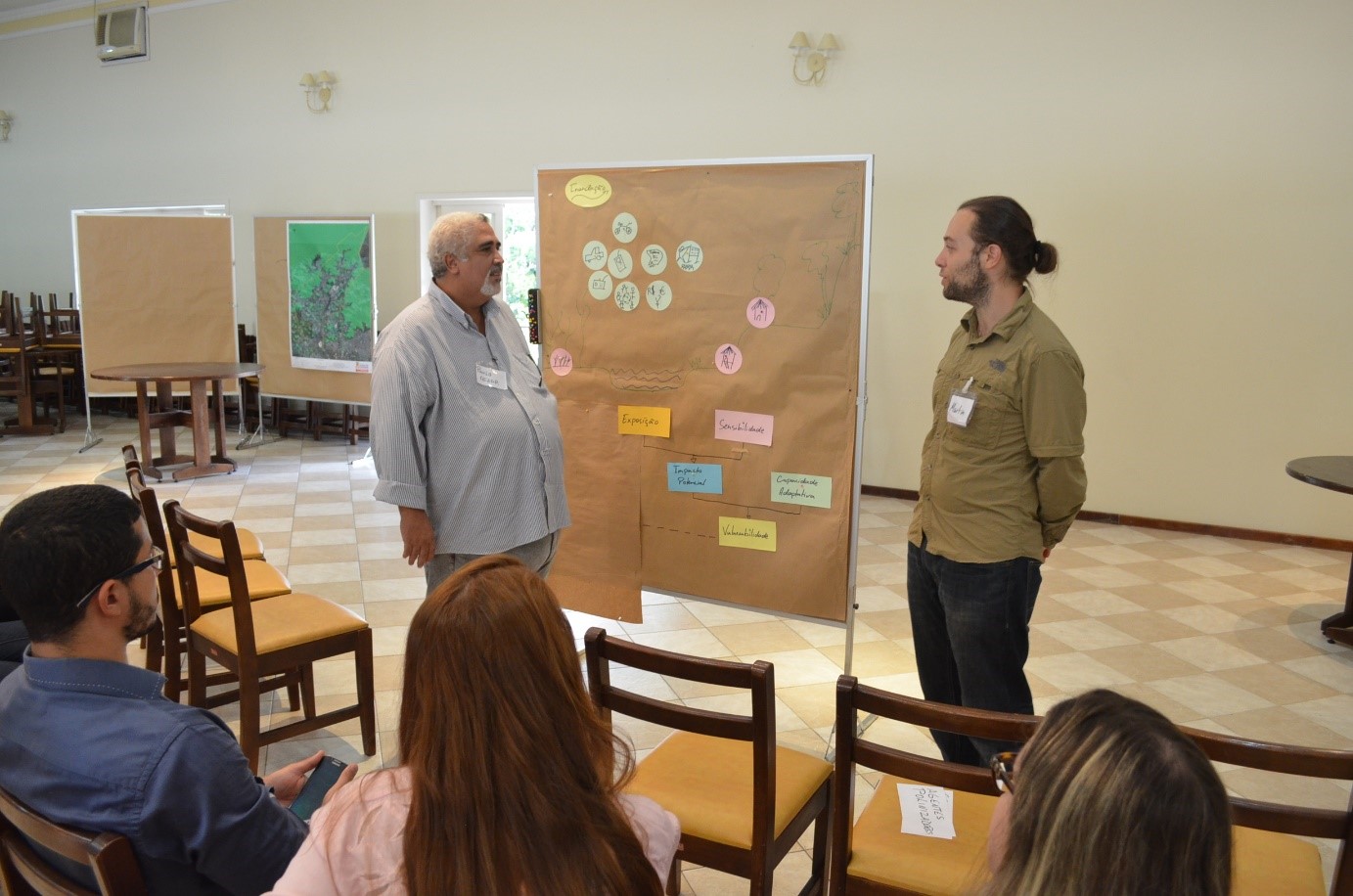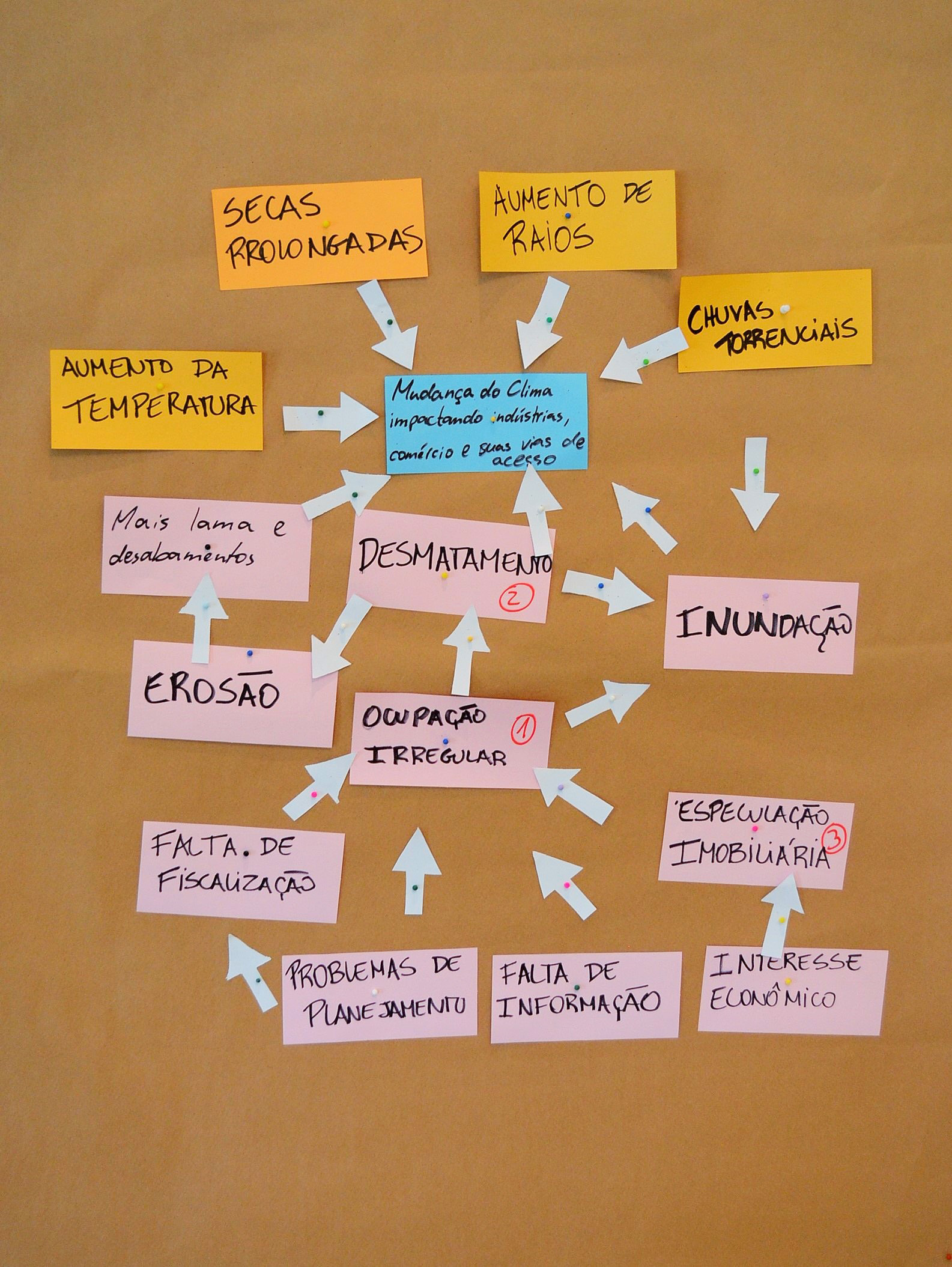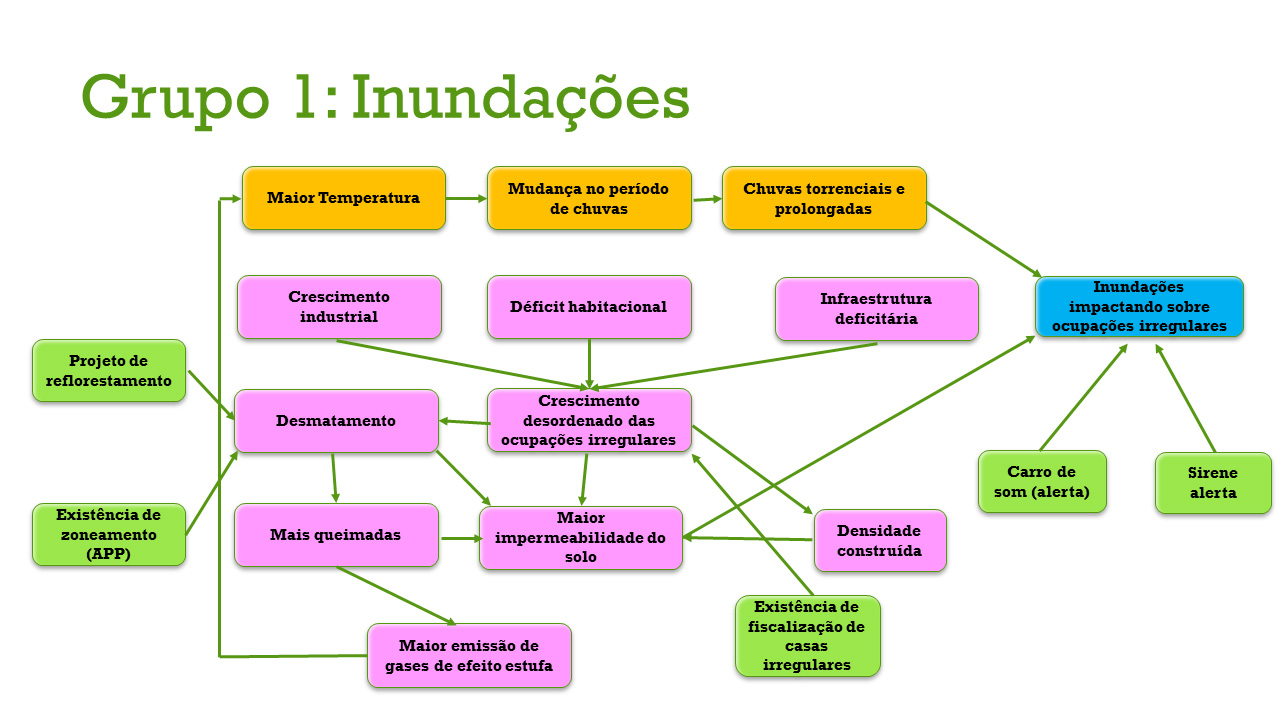



Vulnerability assessments are key for identifying drivers of climate change induced vulnerability. Following IPCC’s AR4 terminology, vulnerability assessments explore exposure to climate change, drivers for sensitivity and current adaptation capacity. By assessing the causes of vulnerability, decision makers are able to identify potential adaptation measures that may contribute to reduce this vulnerability.
Given the limited availability of sound quantitative data on climate change impacts, the focus was placed on a participatory process and the use of qualitative data. Basically, the vulnerability assessment was performed in two workshops (one for the entire municipality, another one for an especially vulnerable district) and focused on previously identified key systems of interest.
The combination of Metaplan and other participatory methods during the workshops helped to engage stakeholders and to mobilize their knowledge. As one of the key outcomes, an impact model that visualizes drivers of exposure, sensitivity and adaptive capacity, served to identify (ecosystem-based) adaptation measures to be considered in the Duque de Caxias city master plan.
- Stakeholder mobilization and engagement, including the incorporation and valuation of their knowledge.
- Measures directed at establishing a common level of understanding among all participants in the beginning helped to better define future tasks.
- A well-thought and well-managed schedule allows for a good monitoring.
- The identification and participation of relevant stakeholders in order to obtain realistic information and validate the results is a decisive factor in gaining credible results.
- Ludic methodologies aimed at focusing on people’s experiences in order to determine climate change vulnerability, linked with capacity-building elements, revealed insights that quantitative desk-studies would not have produced.
- A clear and user-friendly presentation of outcomes (maps, impact chains) is important to get attention and acceptance of key stakeholders for the main study and workshop results.
- The participatory approach used to perform the vulnerability assessment resulted in increased acceptance and involvement.
- Nevertheless, the availability of high-quality quantitative data, including climate modelling, is needed to increase the acceptance of the results among decision makers, technicians, and the population.